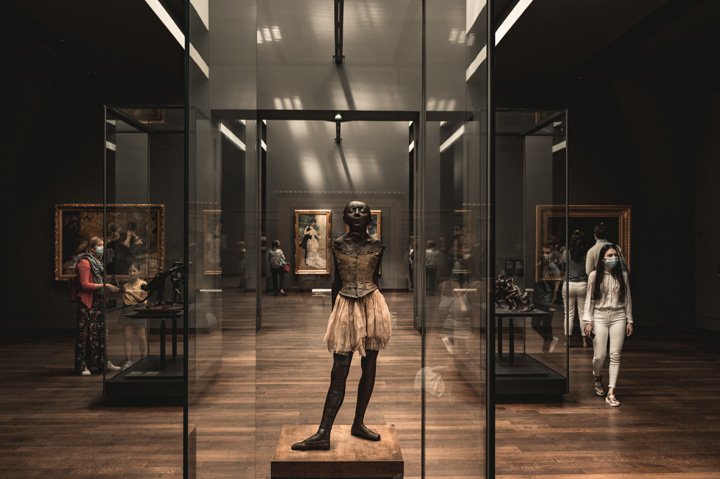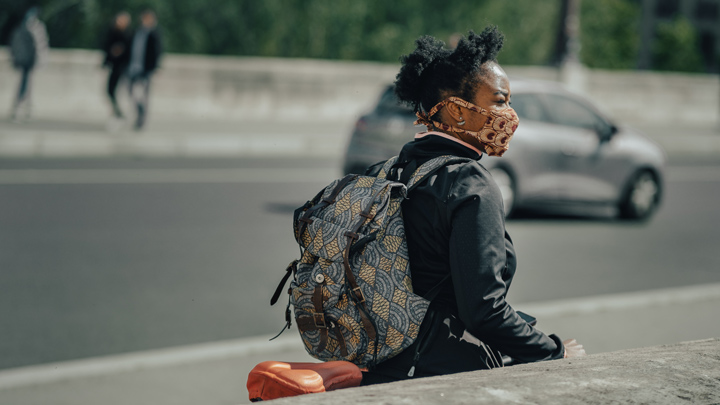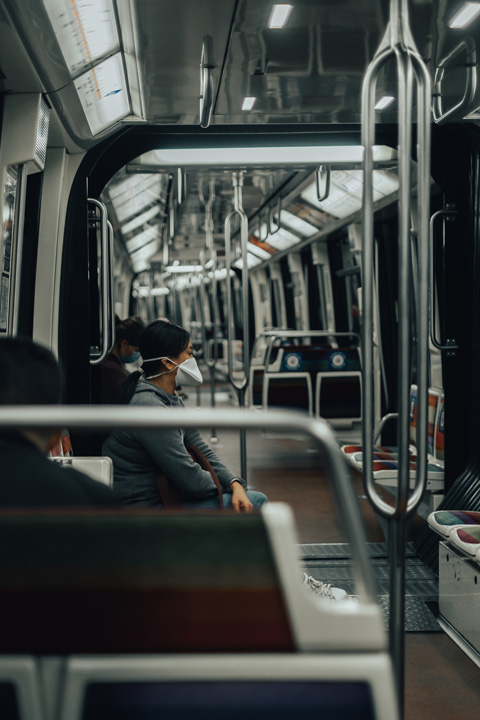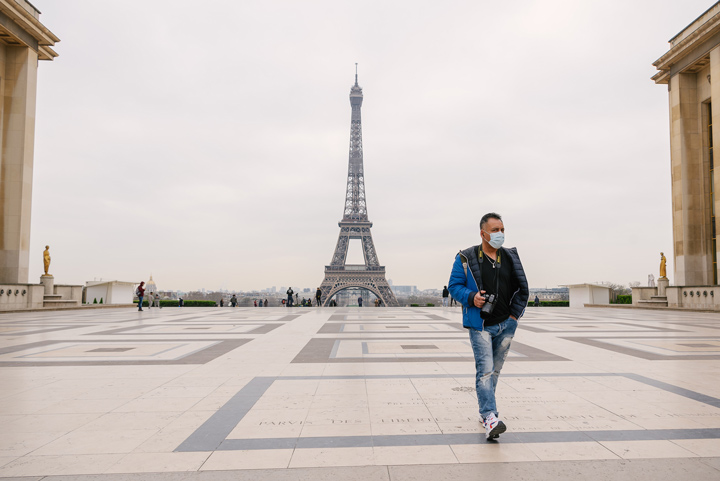A Filipino living in Paris gives a street level view of how COVID is being handled at the French capital. “Security and health measures in the airports and thereafter were more strictly enforced and definitely more organized in Manila than in our Paris airports.”
READ ALSO: In His Own Words: Felipe Oliveira Baptista Celebrates Kenzo Takada, The Genius Who Conquered Paris
A lot of attention has been on the City of Lights of late. According to a forecast by the Paris hospitals group Assistance Publique–Hôpitaux de Paris, France will hit the peak of its third wave of COVID-19 around April 20. In the French capital, just under 2,000 ICU beds are expected to be filled around that time, a bump from its most current count of around 1,700.
Just a couple of days ago, 100 diners were arrested at a Parisian restaurant that is secretly operating against government lockdown protocols. At the end of March, the city’s mayor Anne Hidalgo called for schools to be closed ahead of new restrictions to be imposed amidst rising numbers.
How does it feeling living through a pandemic in one of the most famous cities in the world right now? Bianca Monzon, co-founder of Agence LE BON MOT Paris and who has been living there for years, shares how it is to live la vie en lockdown.
—
It’s been a harrowing year for all. Some countries are bracing for even more lockdown measures in light of rising COVID-19 cases more than 365 days since this nightmare started.

Vaccines have slowly made it into the fold—definitely much more quickly in some countries than others as to be expected—but the end does not yet seem near for many of us.
I’m going to share with you the situation in France today, and how the country is aiming to deal with the pandemic. It’s been a slippery slope for the French since the beginning of this crisis, and we have remained in the top five of the Coronavirus World-O-Meter count more times than you can imagine.
I’m not underestimating the plight of the Philippines in light of the pandemic, of course. I merely want to offer a glimpse into what is happening elsewhere.
Big numbers
As of today, Easter Sunday this year, about 4,822,470 total COVID cases have been reported, registering a total of +66,794 new cases in the last 24 hours. That’s 73 percent of the highest recorded peak recorded on November 7, which had +86,852 new cases.
As of today, there are a total of 4,426,128 active caseshere. There have also been 96,650 deaths, with 185 reported overnight. The death toll in nursing homes are at 26,076, and 70,574 people have died in hospitals.
In France, 29,356 (+470) people are in the hospital, including 5,341 (+68) serious cases in ICU.
According to Santé Publique France data, all departments are currently vulnerable. Among the most impacted regions in France is Ile de France, where Paris is located: 7,608 (+139) hospitalized, 1,633 (+2) in ICU and +34 deaths in 24 hours.
[Editor’s note: up-to-date COVID numbers in France may also be viewed in Google News.]
Restrictions and requirements
Schools, it is important to note, have been at full operations for most levels since June of last year. Work from home was only required for some, but many of the French resumed on site work activities.
Since October, all restaurants had been closed for dine-in, although a few offer delivery and takeaway. Gyms, cinemas, and any spot that promotes crowded gatherings have also been closed. Shops were allowed to remain open, but eventually commercial centers and department stores were closed, too.

By December, a 6PM curfew was put in place. People may only leave home for the following reasons and with an exemption certificate: Work related commute or travel; medical appointments and obtaining medicines; essential family reasons (assisting vulnerable persons or taking care of children); state-sanctioned or legal summons, and walking a pet outdoors within one kilometer of one’s place of residence and for a brief amount of time.
Police checks were implemented, and violators liable for a €135 fine. Further offenses lead to larger fines or even prosecution. The overall execution of this lockdown, however, was lax at best. The French certainly took their liberties in crossing the lines of this lockdown.
More measures
The numbers dropped to an average of 15,000+ cases a day at the turn of the new year, but slowly rose again to where we are today.
As the hospitals get overwhelmed around France due to the alarming increase of cases over the past months, further lockdown measures were put into place since April 3rd, country-wide.
Work from home was stanchly promoted, schools and nurseries will be shut until April 26 (spring break included), while higher levels return May 3 with a hybrid of distance and on-site learning, and only essential shops are allowed to remain open.
It is interesting to point out that bookshops, record stores, DIY shops, florists and garden centers, hairdressers, cobblers, chocolate shops, car sellers and estate agents made it to the list of essential services.
Curfew was raised to 7PM, but a 10KM limit was placed on all activities from an individual’s residence.
Starting April 5, you may not travel outside your region without a pressing reason or professional reason to do so, and with an exemption certificate. French nationals abroad may however travel back to France, and cross-border workers may continue to move as before.
Never-ending lockdown
How does this all figure in our daily lives in Paris? The lockdowns that followed our release in June from the initial and original lockdown have been half-baked and insufficient at best.
Our borders remained mostly open throughout this ordeal, and temperature checks did not happen on the frontiers until much, much later, if at all. Friends who went home to the Philippines for the holidays lamented that security and health measures in the airports and thereafter were more strictly enforced and definitely more organized in Manila than in our Paris airports.
Many people I know were actually required to go into their offices, some with no measure to ensure people remained safely apart.

When restaurants and cafes were open, they were filled to the brim with no semblance of social distancing or mask wearing on site. Not once did we have our temperatures checked here upon entering any commercial or public establishments. Masses of people would still gather for parties and apparently even underground concerts in certain venues.
There was also the occasional diaspora from the city into the country homes to escape the sordidness of city living under lockdown in Paris. In a few cases, there was even international travel.
Truthfully, it seemed somewhat easy to get away with these things in France, and the French by culture find it challenging to sustain strict lockdown practices, as I was told by my French husband.
French realities
How did we cope? Guilty as my friends and I are, we (in our little bubble) still got together in our homes albeit in smaller groups. We had our weekly sanity lunches or sporadic holiday get-togethers. After all, it was impossible for us to isolate ourselves from the virus entirely as our counterparts in Manila did.
Our kids were going to school every day in full roster then to their after-school sports and activities. Our household help still rode the metro day in, day out to get to and from our homes and free to do as they wish on their weekends off.
Some of our husbands went to the office every day at full capacity. (My husband works in a high-rise and rides that elevator with who knows who each time.) Most of us commuted to work and to run errands. We did our groceries and received deliveries as normal. These were the realities of our everyday life in France.
After a long period of varying degrees of lockdown, I feel that people here are quite exhausted with lockdown living. We are anxious about how and when this pandemic will play out for the remainder of the year. The only light at the end of this seemingly eternal tunnel is the arrival of vaccines.
Slow rollout
Vaccinations have been administered so quickly in the neighboring UK and also in the US. Here, it has been extremely slow, even for the senior citizens.
As of this writing, France ranks 22nd in terms of vaccine rollout, with only 18 doses administered per 100 people, 14 percent having been vaccinated. By comparison, the UK has rolled out 56 doses per 100 people, 47 percent total population vaccinated.
[Editor’s Note: Current numbers as published by the New York Times has France with 21 doses administered per 100 people, and 16 percent of population vaccinated. The UK is at 58 doses and 48 percent.]
A lot of faith is being put on the vaccination plan that the French government recently released to address growing numbers in the coming months.
A total of 1,700 vaccination centers have opened and are administering Pfizer and Moderna vaccines to all those aged 70 and above. Around 250,000 health professionals have been mobilized to administer the AstraZeneca vaccine (and soon the Johnson & Johnson vaccine) for the rest of the population.
By the end of the summer, it is anticipated that all French adults who want to be vaccinated will be vaccinated.
Moving forward
All we can do is to remain hopeful as the plan’s viability remains to be seen. The pandemic has been so much more difficult in other countries that it seems inappropriate to complain or air further frustrations at how this is being handled in France.
But as we are living with our reality here, we can only hope that France has indeed started the way forward.
May this lockdown and vaccination plan work in our favor. We would have preferred sterner, more absolute lockdowns earlier on if this was to have saved us time versus having had such a long, drawn-out, gray area lockdown. But then who’s to say what could have worked best?
United world
I suppose we must all accept that no one knows absolutely what the best way is out of this pandemic, given the specificities of each country and each people. Most governments seemed to have stumbled in one way or another in finding their way around and through this pandemic.
It is always easy to judge and point errors from an observer’s standpoint. But it’s harder to overcome obstacles when you are the leaders on the forefront making the tough decisions that can leave grappling, long-term effects on your country.

We can only hope that we make it through this pandemic, one country at a time.
This is a collective not individual predicament: COVID-19 is only over when the majority of the world has been able to overcome it. Only then can we hope for life to go back to the real normal. All for one, one for all, once and for all.
Banner Photo by Lawless Capture on Unsplash





